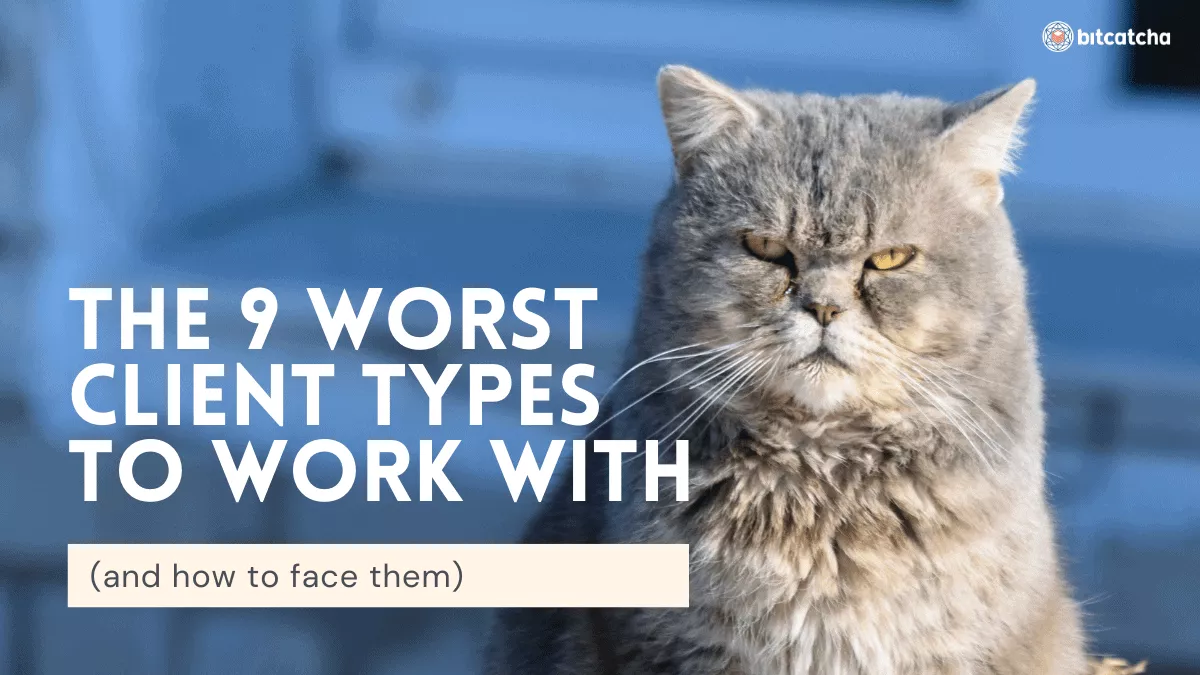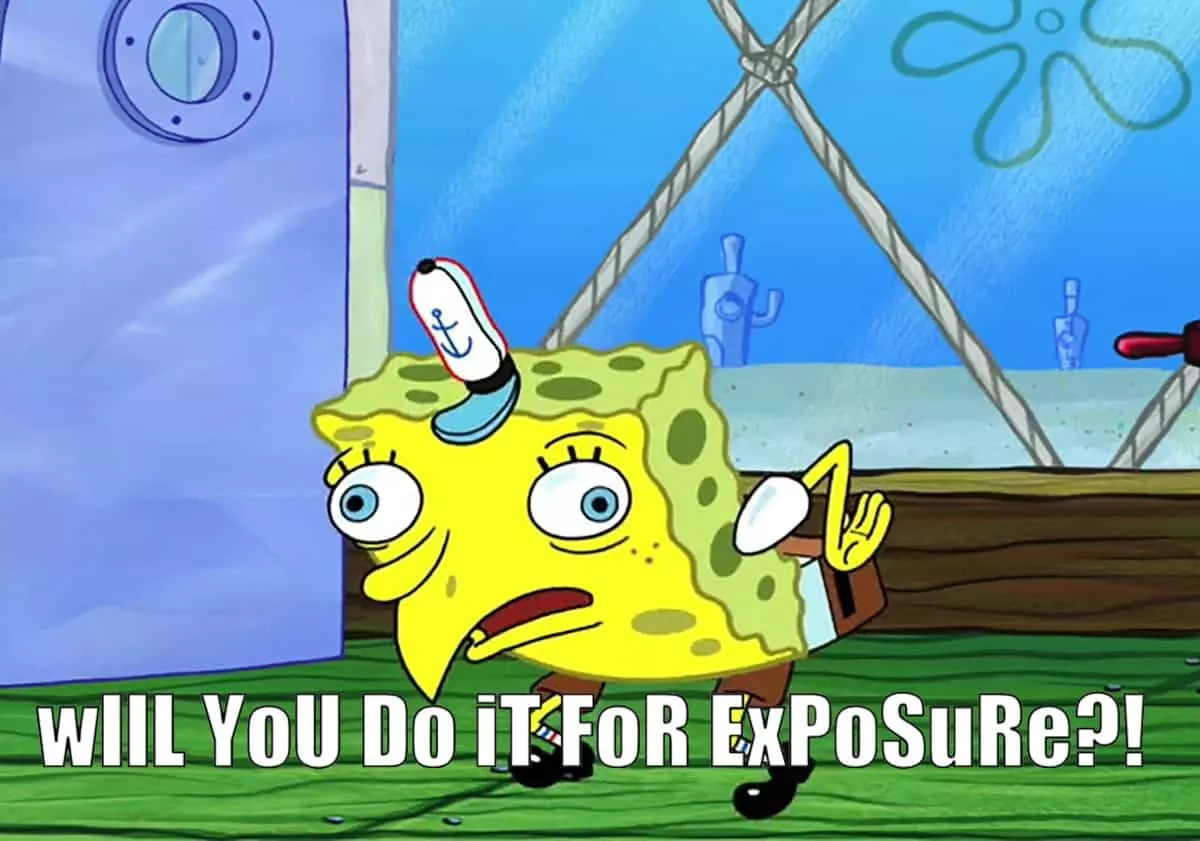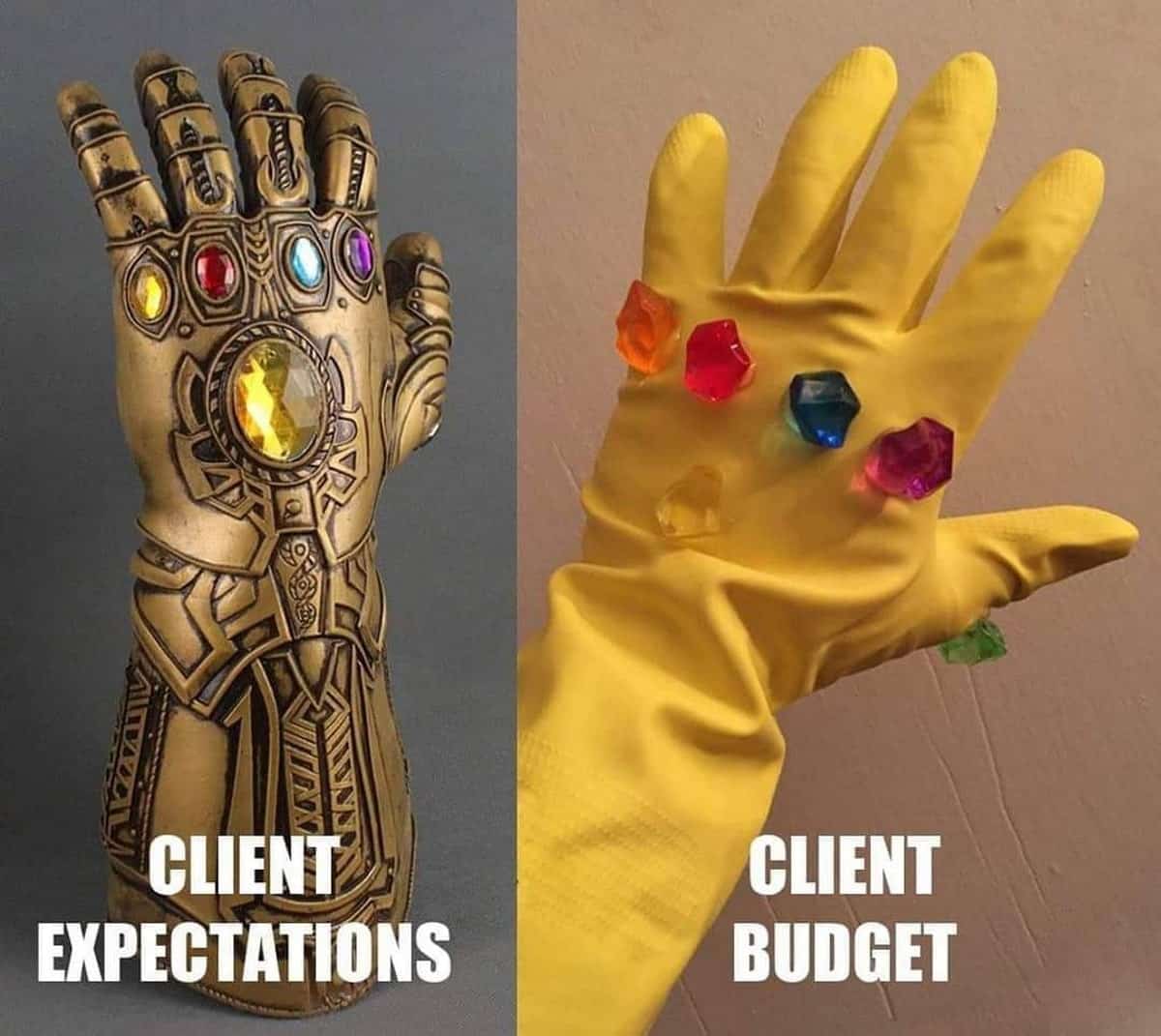
“Hey, will you work for exposure?”
Oh my word, if I had a penny every time I’ve heard that from a client, I’d be living large.
Freelancers are sure to meet all kinds of characters through their career. Most clients are great to work with on a purely professional level. Some clients you may befriend.
Then… there are a quite a few clients that are *sigh* challenging to deal with.
Some are just blissfully ignorant, which can be fixed. It’s the ones with dubious intentions that you have to be careful of.
These clients may try all sorts of funny business with you. They’ll be late for payments, uncooperative, unresponsive and, sometimes, they have the audacity to not pay at all!
I call them Karens. Here’s a list of the worst (and most common) types of Karen and how to deal with them professionally.
Freelance contracts are there to stop dubious clients from vanishing when it’s time to pay.
Contracts are there to protect your rights as a freelancer and your ability to use work in portfolios. Contracts also protect the client from bad work.
Disregarding the fact that contracts benefit both parties, this behavior is a clear red flag. These clients obviously don’t want to be held accountable to the terms of agreement they’ve made.
If you ever meet a client that doesn’t want to sign your contract, you’ll need to head for the hills!
Remember, no contract, no deal. No bargaining on this.
Speaking of bargaining…

Clients that are always asking for free work, constantly bargaining and trying to cheap you out are one of the worst.
Your hard work and effort is not for free. Clients that ask once might just be looking for a bargain, which can’t be blamed. But, those that keep pestering you about rates are disrespectful towards you.
If someone constantly asks you to lower your prices or do it for free, they’re pretty much looking down on you. Would you go to the local diner and ask for a discount, let alone a free meal? No!
Don’t let clients disrespect you by undermining your work. If a client is insistent of freebies, tell them to kindly go fly a kite.
If you think you’re charging too much, compare it to the local market rates. Sometimes, your rates are very reasonable, but it’s out of the client’s budget. You can’t buy a car if your budget is the price of a bicycle. Weird analogy, I know, but you get where I’m going.
In that case, it’s not on you, nor do you have to feel like you’re charging too much. The client just isn’t the right client for you.
A technique I’ve learnt to do to limit this is by stating rates outright. My first few words will always be my pricing every time a client makes an inquiry.
I seem to face less hagglers when I set my prices in stone off the bat. Give this method a go, and it’ll also serve as a good “Karen repellant” for your career.
Clients with unrealistic expectations are the ones you will meet the most.

Prepare for preposterous demands like creating a fully functioning website from scratch in a few hours. Some will call your timezone at 3 a.m. to make project amendments. Many of them are the ones on tight budgets.
When you meet a new client, always explain your process and work boundaries.
We’d recommend you set timelines for the projects, and use a solid contract to protect yourself from any unprofessional circumstances the client might cause.
When having a video-call interview with a client, you should establish your business hours early on. Most clients would be realistic enough to not expect an immediate reply outside of business hours.
Of course there are a few clients that will contact you at odd hours, but that’s fine in most cases. Normally, it’s an emergency or a heads-up for the next business day.
But, sometimes, Karen just has nothing better to do than to make your life a little bit more “exciting”.
Ideally, your client should respect these boundaries once you make it clear to them. But, if they’re less willing to cooperate, you might be putting yourself in a fishy situation.
If they’re still insistent after multiple reminders, you need to have some real talk with the client. If that still doesn’t work, you have the choice to grit through the contract or write a break-up email.
It’s normal for client misunderstandings now and again. However, some clients are just infuriatingly bad at communicating.
Imagine working on a time-sensitive contract with a client. You’ve finished your end of the deal and sent it off to be approved. You wait for weeks for them to get back to you.
Then out of nowhere, they email you back saying they’ll need a lot of changes done and by tomorrow; because they forgot to get back to you earlier.
The next time you meet a client like that, send them multiple emails reminding them that they haven’t gotten back to you. Follow up every few days, or even more often if it is really urgent.
This client (arguably) knows how to communicate. But they’re extremely self-contradictory.
They don’t really know what they want and would have peculiar requests like:
“Make it look traditional but modern. Use a color that’s never been used. I also want it extravagantly minimalist.”
Yes, I’ve encountered requests like these before.
The more general contradictions are wanting logos but don’t know how it should look like. According to them, they’ll know what they want when they see it.
Without a clear vision for the project, these clients would most likely be unhappy in the work you deliver regardless of its quality.
To save yourself the headache, avoid clients who don’t have an idea what they’re looking for, and add a clause in your contract limiting the number of revision requests you’ll do.
This leads us into the next bad client personality type, one that I have a personal distaste for.
Personally, I think scope creeping is one of the shadiest and underhanded moves a client can pull during your contract, except maybe skimping on payments.
Scope creeping is the act of getting you to do more than what is in your contract. Some clients will slip in more work for you than intended. I’m not talking about an extra few words or amendments, those are fine.
I’ve worked with a client that wanted a 5,000 word piece. She ended up changing the theme and tone 5 times.

Long story short, I ended up doing a whole 25,000 word thesis but got paid the price of the original deal.
Why? Because it was supposedly the same piece but she just wanted it to be different.
That day I learnt an expensive and long lesson about protecting yourself from scope creeping.
You need to review and revise your contract.
Your freelancing contract needs to have clauses such as when you’re working and specifically what your scope will be. The clauses can be things such as..
You are bound to meet clients that will make you do extra work. Make sure your contract protects you, or at least lets you charge for the extra services.
Ever had one of those clients that made you think “if you’re so smart about this, why not do it yourself?”
Yep, micromanaging clients would find all sorts of fault in your work, even with zero technical expertise on the contract.
They are the opposite of mis-communicating clients and would prefer to nitpick at every detail (even if it’s impossible/illogical).
When you encounter clients that bombard you with ridiculous feedback too often, kindly remind them to trust your expertise.
You finish a project and *poof* they disappear into thin air. If Houdini was alive, he’d be impressed.

If you ever come to this situation, your best bet is to constantly follow up. Be as persistent as they were when the project wasn’t completed.
Make sure to follow up every few days to a week through email and calls until the payment has been made.
If the client still doesn’t want to adhere to the contract, you can seek professional legal aid for freelancers.
To prevent this from happening (or at least lessen the implications), always charge an upfront fee. Most freelancers, including me, charge at least 50% of the final payment as a deposit.
By doing this, if you meet a ghosting client, instead of drowning in problems, you’ll just be knee deep.
You should trust your gut.
If a potential client gives you the heebie jeebies, it’s a pretty good indication that it might not be the wisest choice to work with them.
Humans have lived this long through a gut feeling, it’s a built in survival instinct that we all have. If your literal survival instinct is telling you there’s something wrong about a potential client, end the conversation right there.
The outcome is not worth finding out if your gut was right or wrong.
Here’s a snippet of a fun little exchange a fellow freelancer had with a potential client that displayed all the personality traits above. Enjoy.
You can click here for the full text, it gets WILD! (also gets super vulgar.)
Freelancing is a career where you’ll meet and work with all sorts of people. Most of them are nice, some of them are great. And then there’s others that are…. not so great.
To protect yourself from dubious methods, from payment skimping to scope creeping, draft out a solid contract and establish boundaries early on.
In the case you meet a suspicious client that doesn’t want to sign a contract, or if they give you bad vibes, kick them to the curb immediately, honey, you don’t need none of that.
David is a content creator and freelancer. His journey started with writing songs, poetry and academic dissertations in Vancouver. David has freelanced for multiple companies around the world. Feel free to connect with him on LinkedIn.